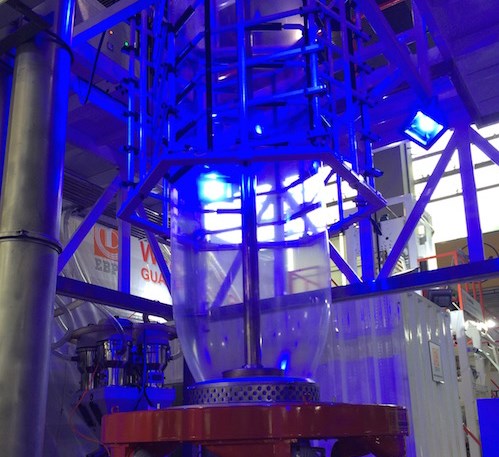PE Prices Down, PP Prices Up?
Global factors like plunging oil prices and larger resin price decreases overseas impact domestic polyolefin prices.
Global factors like plunging oil prices and larger resin price decreases overseas impact domestic polyolefin prices.
Factors that affect polyolefin prices have been changing over the last couple of years. Traditional factors such monomer prices no longer appear to be among the key drivers, replaced these days by plunging crude oil prices and other global factors such as slowed economies and larger resin price decreases overseas. This introduces more “ifs” and makes it more than a tad difficult to wager what will happen more than a month or so down the road. So, here is the current state of things for PE and PP.
PE prices down? “North American PE suppliers may be forced to respond with lower prices in January or February to remain competitive with imported finished products,” said Mike Burns, v.p. of client services for PE at Fort Worth, Texas-based Resin Technology, Inc. (RTi) at the start of the year. He noted that imported, finished film and bags with lower competitive prices have started to surface in North American markets. In the first week of this month, bags from China coming into the U.S. were going for 75ȼ/lb while domestically produced bags were at 82ȼ/lb. Burns sees this as becoming an urgent issue if the difference widens beyond 10ȼ/lb.
This is one major reason why PE suppliers who are still pushing to implement their 5ȼ/lb increase, first issued in June 2015, need to think twice. And, apparently they are, with most suppliers postponing the increase from January to February. Moreover, Houston-based PetroChemWire reported last week that one supplier had notified customers that it would reduce its PE prices by 3ȼ/lb.
Michael Greenberg, CEO of Chicago-based The Plastics Exchange reported last week that in order to better reflect current PE market conditions and spot domestic railcar pricing—including the bearish state of energy and feedstock markets—a PE contract decrease on the order of 3-5ȼ/lb would be reasonable for this month.
Burns stresses that global demand and the price of oil will be the key drivers of PE prices throughout this quarter.
PP Prices Up? Industry pros see this year’s supply situation becoming even tighter than last year owing to no new capacity coming on stream, continued strong demand, and planned maintenance outages though this quarter. PetroChemWire reported earlier this month that relatively weak international PP markets could well drive an influx of both imported resin and finished goods.
Scott Newell, RTi’s v.p. of PP markets noted that the domestic PP price is carrying a big premium over the rest of the world—nearly 25ȼ/lb over Chinese PP prices. “This spread is growing as domestic suppliers continue to implement profit-margin increases, and this could result in demand destruction over time for the domestic PP market.” He ventures that such demand destruction could come in the form of imported resin or PP finished goods and transition from PP to other resins.
The Plastics Exchange’s Greenberg noted that PP sales in 2015 were up over 5%—about 850 million/lb more than 2014. “While some processors are grateful for the 13.5ȼ/lb price decrease during 2015, others just see suppliers keeping the lion’s share of the cost savings for themselves, especially with another 6ȼ/lb margin enhancing increase in play for January.”
Which brings us to what will happen to this 6ȼ/lb increase. Newell, for one, ventures that the entire price hike will eventually be implemented this quarter, but not all at once. He and PetroChemWire reported on unconfirmed industry talk that the initiative would be evenly split between this month and next. The latter also reported that one PP supplier had made no announcement for this month but had issued a 6ȼ/lb increase for February.
Greenberg noted that while cheap energy and monomer costs have led to larger PP price declines overseas, the U.S. supply/demand dynamic remains tight and prices need not cave in. “U.S. suppliers only export around 2% of PP production, so they are not really impacted by competitive offers from regional suppliers. In order for domestic processors to reap the benefit of cheaper international PP, they cannot remain passive—more resin imports would need to flow into the U.S., which would require ripping a whole lot of undesirable 25kg bags, an alternative resin handling program, or simply an altered attitude after a quick cost/benefits analysis.”

Read Next
Lead the Conversation, Change the Conversation
Coverage of single-use plastics can be both misleading and demoralizing. Here are 10 tips for changing the perception of the plastics industry at your company and in your community.
Read MoreMaking the Circular Economy a Reality
Driven by brand owner demands and new worldwide legislation, the entire supply chain is working toward the shift to circularity, with some evidence the circular economy has already begun.
Read MoreFor PLASTICS' CEO Seaholm, NPE to Shine Light on Sustainability Successes
With advocacy, communication and sustainability as three main pillars, Seaholm leads a trade association to NPE that ‘is more active today than we have ever been.’
Read More












 (2).jpg;maxWidth=300;quality=90)









